While at ISPO a few days ago, I got the chance to take out the new Staaker drone for a spin. This drone is much like AirDog that I’ve reviewed previously, in that it focuses exclusively on sports action filming. More specifically: Autonomous and self-tracking filming, which is quite different than what DJI or GoPro provide. Ultimately the idea being that you wear a small waterproof transmitter pod on your arm, and it then tracks you automatically and films you accordingly. Hopefully in an epic sort of way.
However, it also has some notable differences to the AirDog which may make it a compelling option once it starts shipping. At present, the company is taking pre-orders, with a plan to begin shipping later in May. But before we get too far ahead of ourselves, let’s talk tech.
Technical Overview:
The Staaker is like most new drones on the market in that it folds up to save space during transport. The unit comes in a hard-shell case that’s smaller than I expected. It’s small enough to fit inside my existing generic red backpack, if I wanted to take other things with me (my bag seen in the video a bit further down).
Once opened up, you’ll note that the props can stay on within the case – a feature not possible with AirDog. With GoPro’s Karma drone, they can stay on within the much larger/bulkier hard-shell case, but not within the softer GoPro Seeker backpack. If you’ve ever tried filming yourself and preparing a drone for flight on a @#$@’in cold day on the side of a mountain in the Alps, then saving time trying to thread props onto the drone with heavy gloves, then this is something you’ll no doubt appreciate.
The battery also easily pops in and out from the rear of the aircraft.
Next, the unit has a dedicated transmitter/remote. This remote is fairly similar to the AirDog one, though a bit more bulky. On the flip side, it has slightly easier to understand functionality. When I say ‘slightly’, I mean that it still lacks text on the buttons, so you do have to remember which set of which buttons does which things. Though, given the buttons are big enough I could solve that with a felt tip marker.
The remote allows you to iterate through the various modes, which are largely autonomous in nature. Meaning each mode positions the drone in a different spot in the sky relative to you. As you ski/bike/run/whatever, the drone will automatically follow you because you are wearing the remote.
The remote and the drone both have GPS and altimeters within it, ensuring that both devices are able to track position and altitude.
The platform has the following modes:
– Circle: Rotates around you endlessly
– Compass: Stays in a given position relative to you
– Follow: Follows you from behind
– Scenery: Free-flight control
– Land: Lands the aircraft
– Hover: Stays put and camera follows you
These modes are pretty similar to what AirDog has, with the exception of the free-flight mode, which I’ll talk about in a second.
The remote is IP68 water resistant, which means it can be submerged in up to 5 meters of water (ideal for water activities like surfing). Meanwhile, the drone itself has an IP44 waterproof rating, which means rain and such is no issue.
The remote has buttons which cover these core purposes:
Left Side buttons: Makes drone go closer/further
Top Left buttons: Increases elevation/decrease elevation
Bottom buttons: Makes drone go to left/right
In addition, there are dedicated buttons for take-off/landing, and changing modes. And like most drones, it’ll automatically return to home if it loses connection to the controller. And you’ve even got options you can pre-configure there too, such as returning to the point of takeoff, or returning to the last known point of you and the remote. For example, if surfing, you don’t want it to return to you – but to the beach. Whereas downhill skiing you don’t want it to return to the top of the mountain, which could be miles away.
As I noted earlier, one distinct difference to AirDog is the inclusion of a free-flight mode. In the past, my general recommendation has been that if you want a cinematic-focused drone (i.e. to make videos/photos of things/scenery around you), then pick up a DJI product like the Mavic or Phantom 4. Whereas if you wanted a drone to track yourself while doing a sport, then pick up the AirDog. But the challenge was that neither drone did the other’s job well. For example, AirDog doesn’t really have a mode that you can fly it around as you see fit and get various shots.
These non-following shots can be useful in intro/establishing shots, as well as just general positioning that autonomous follow-me flying doesn’t cover. So this free-flight functionality is a useful feature that Staaker includes. You can use the remote in this mode allowing you to fly the drone wherever you’d like, pretty much like most other drones.
Note however that you cannot change the position of the gimbal in this free-flight mode, which stays at a 20% down angle (not bad per se), nor can you preview what you’re doing like other drones with a display on the remote. But still, for most people, it’ll be better than nothing and helps fill some holes.
Speaking of the camera side – the unit has no start/stop control of your GoPro (GoPro won’t give them access), but the Staaker can accommodate most GoPro’s, including the Hero5 Black. Though, it can’t do any of the smaller square GoPro Session cameras. The company is using a 3rd party gimbal, as they noted that there was little upside in trying to re-invent the wheel where other companies have already done the work.
That gimbal means you’ll get smooth shots, and is one of the most critical differences between a good drone and a crappy drone. The gimbal will automatically point up or down at you, based on where you are with the transmitter. In free-flight mode, it’ll stay at a static 20% down angle.
Still, there are some gaps here. First is that the Staaker doesn’t have any obstacle avoidance, neither forward facing or downwards. It also doesn’t have any downwards sensors. Thus when it lands, you kinda wince in that it comes down pretty hard. The company seems to understand the ramifications of that (no pun intended), in that it will automatically turn your GoPro to face the sky (upwards), protecting the lens upon landing.
But on the optical sensors, it’s a bit more of a problem. For example, my biggest issue with AirDog is that I’m constantly having to watch it in the sky to ensure it doesn’t hit trees/cliffs/objects. It lacks forward obstacle avoidance (though does have downwards avoidance). Whereas DJI, for example, has obstacle avoidance, though it lacks good sport tracking. Still, for Staaker to have none is a huge downside.
The company argues that obstacle avoidance systems today in drones can’t handle upwards of 70KPH in speed (from a processing/avoidance standpoint). And that may well be true. But it’s also true that the vast majority of filming isn’t done at those speeds, unless you’re talking motor sports. Most of us are going between 30-40KPH in most self-propelled sports, which obstacle avoidance systems can handle just fine. Even if they were to offer the higher speeds without avoidance, that’d be an ideal compromise.
Still, the company is advertising a 30-minute long battery, which is roughly double what AirDog gets. It’s also on-par with what companies like DJI are getting in their higher end drone. The battery comes in at 1.2 pounds each (550g), and the drone itself is 3.5 lbs /1.6kg (including the battery). That’s fairly light for something tossed into your backpack.
Overview Video:
As I noted earlier, I got to spend some high-quality time in a dreary parking lot with the Staaker. Which is kinda funny in a sense. Normally at conferences (this was ISPO), I’m a bit of a master at finding a random bush or tree or set of rocks to take pretty pictures of devices (even as seen above). But of course with a drone, it’s a wee bit harder to take aerial shots in a dreary place and make them super interesting.
So do keep in mind this is showing the technology, more than making an amazeballs video. Had I filmed this in the Alps or the desert, it’d look a lot cooler. But alas, a German convention center parking lot in the winter will have to do.

As I noted earlier, it’s usually easier to make things look a bit more interesting/exciting when it’s not a grey parking lot. But as Shrek says, ‘That’ll do Donkey, that’ll do’.
Going forward:
Overall, it’s definitely an interesting entrant, and certainly something to watch. At its current pre-order price of $1,195, it’s in the ballpark of other drones on the market, albeit notably below AirDog. Though, at their planned retail entrance price of $1,595 (same as AirDog), it’s a much harder sell (just like AirDog is at that price). Hopefully, they’ll reconsider that before May 15th, 2017 – when they start shipping.
I’m loving the fact that it has a free-flight mode for getting those establishing shots, and the size of the unit is much smaller than I anticipated from their site, especially given the props can stay on in the included hard shell case. Further, their inclusion of a full extra set of props is a nice touch.
One final note is that the company will be manufacturing these fully within Scandinavia, as opposed to outsourcing to Asia. That’ll likely contribute to more initial manufacturing success, as most startups have issues early on in the hardware manufacturing process due to being unable to either communicate or oversee the specific changes and quality levels they need. It should also help them hit their timelines – which is good for consumers and companies alike.
With that – thanks for reading!
FOUND THIS POST USEFUL? SUPPORT THE SITE!
Hopefully, you found this post useful. The website is really a labor of love, so please consider becoming a DC RAINMAKER Supporter. This gets you an ad-free experience, and access to our (mostly) bi-monthly behind-the-scenes video series of “Shed Talkin’”.
Support DCRainMaker - Shop on Amazon
Otherwise, perhaps consider using the below link if shopping on Amazon. As an Amazon Associate, I earn from qualifying purchases. It doesn’t cost you anything extra, but your purchases help support this website a lot. It could simply be buying toilet paper, or this pizza oven we use and love.

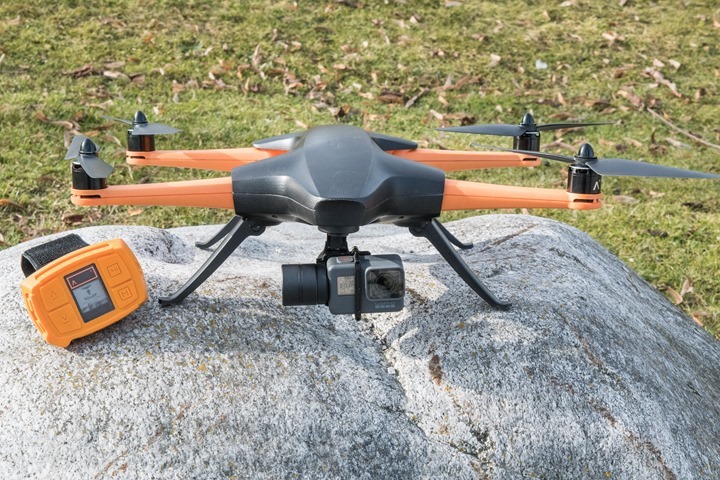
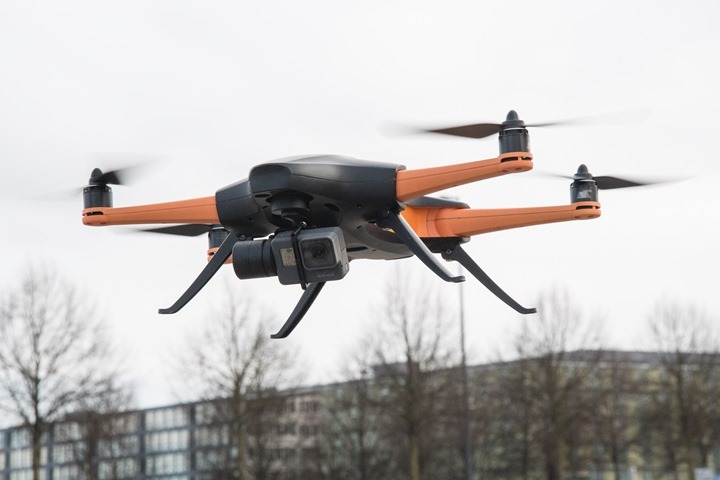
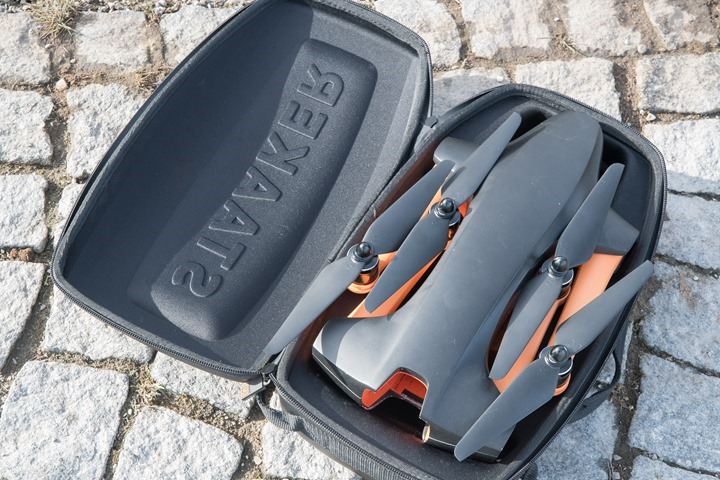
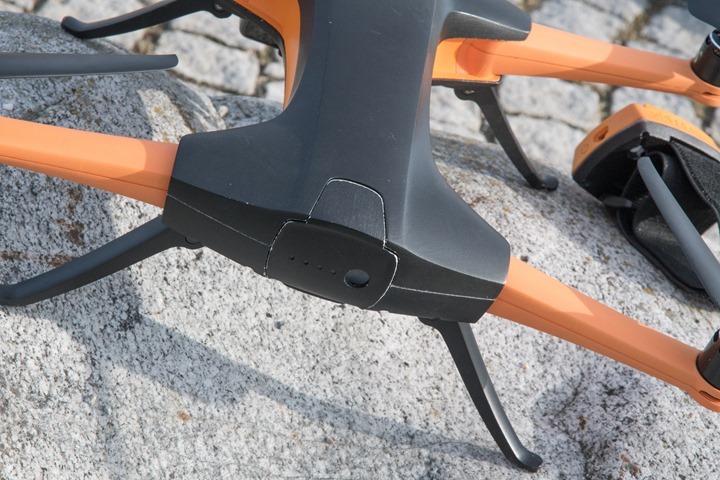
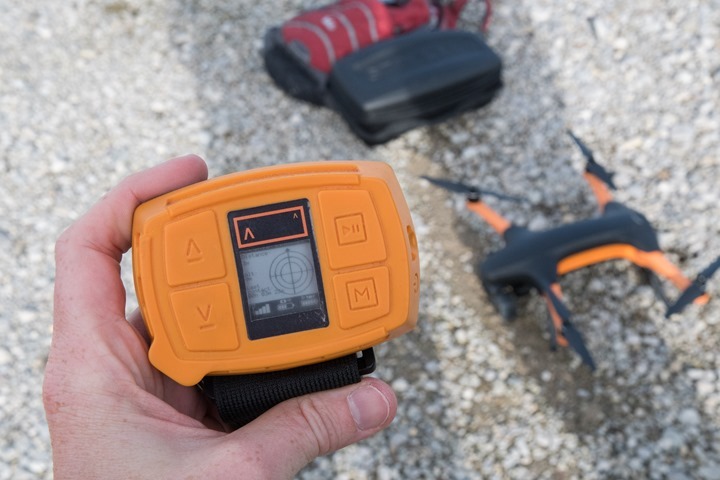
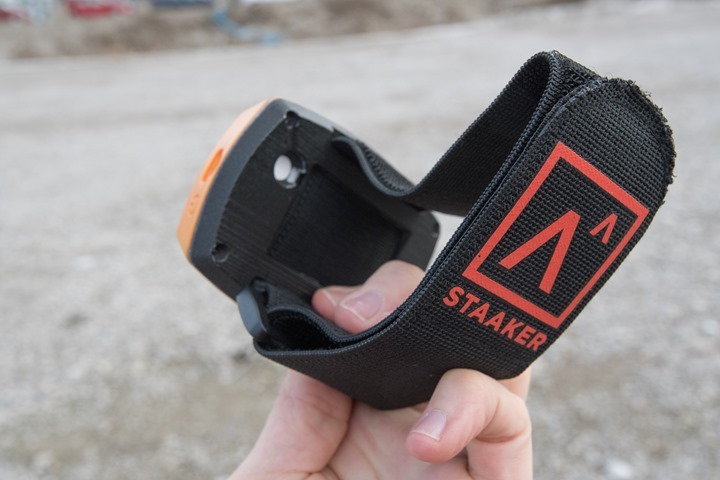
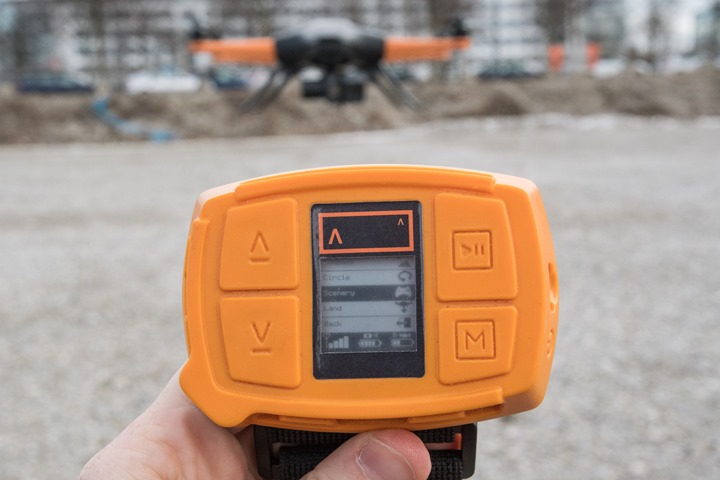
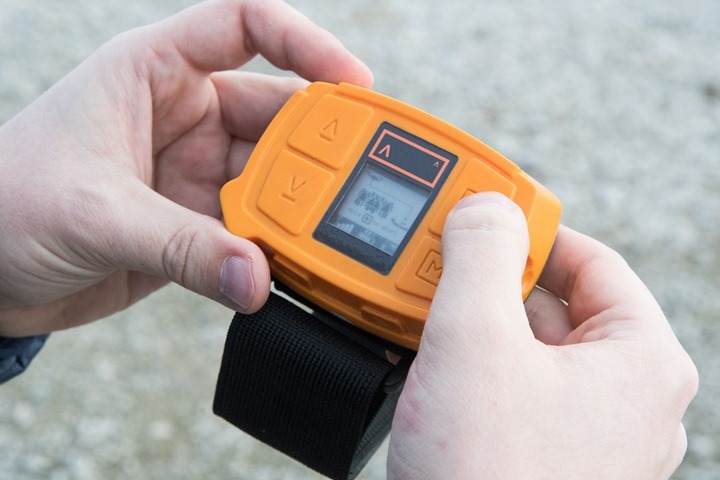
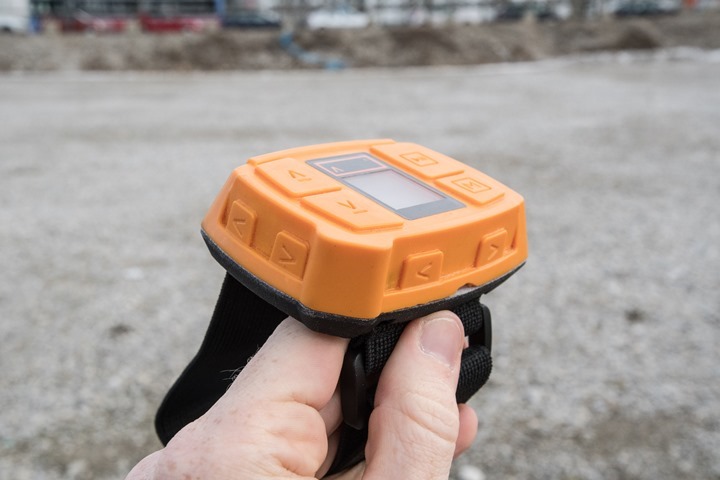
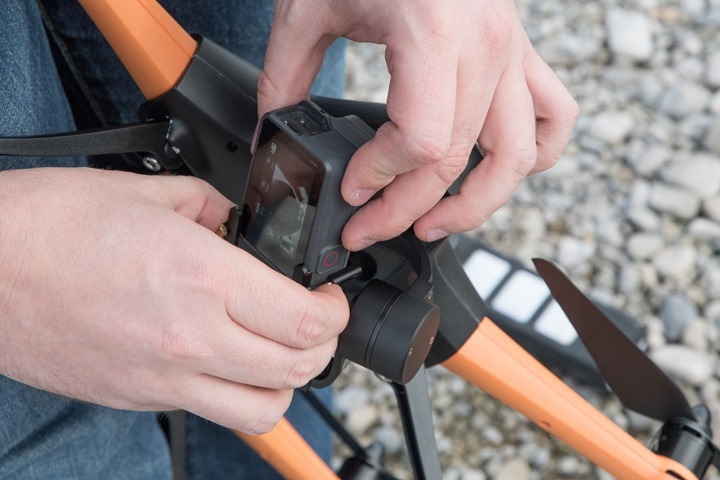
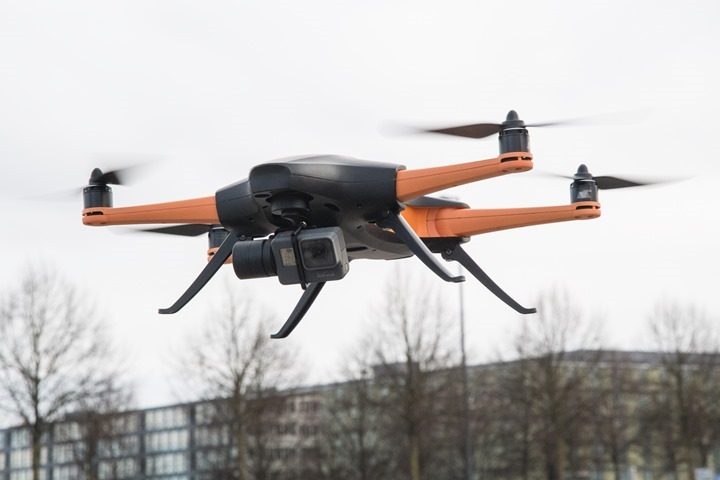
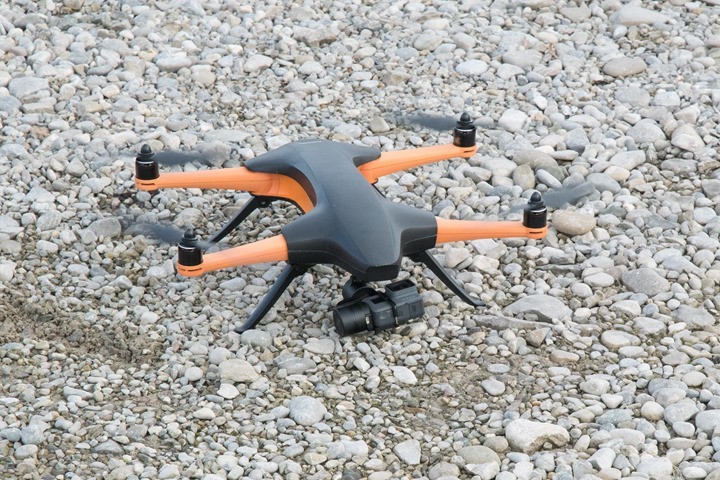
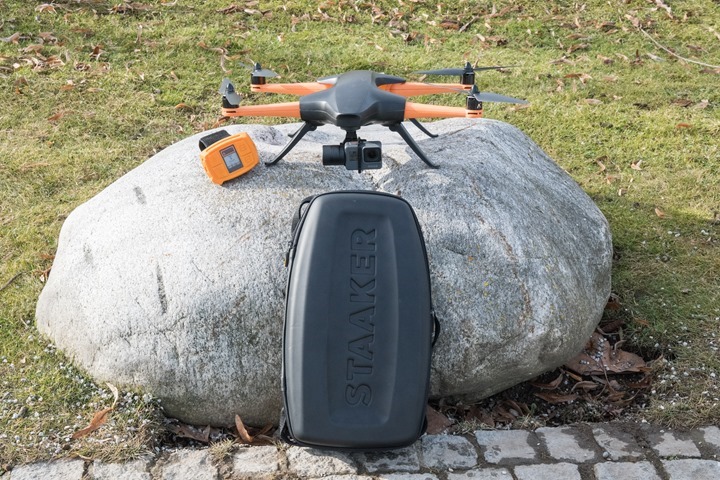
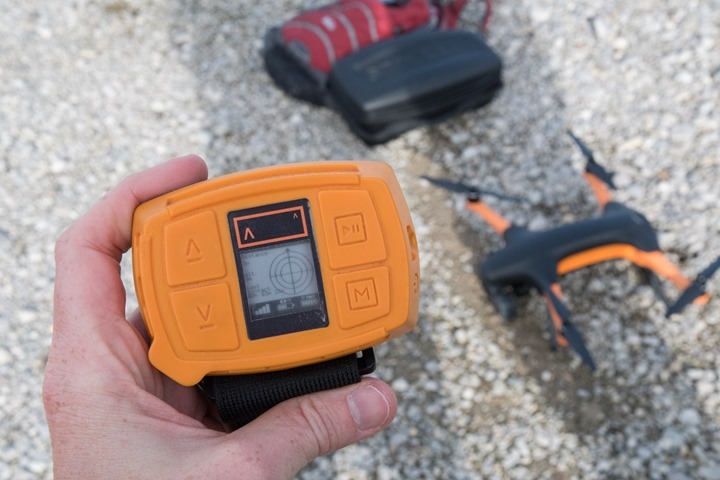





















That price is way too steep for that. The technology in that is minimal compared to others like the DJI Mavic. You have to buy your own camera, sure it folds up but it’s still decently big and it looks like it’s made out of plastic. As Ray said during the video, he had SD card errors and he can’t even tell because there is no way to tell. Basically it just follows the GPS module, that’s it. You can do this with the DJI series with your phones GPS with 3rd party apps.
Pricing is absolutely insane
I agree, very steep (primarily retail price).
The challenge with the 3rd party apps route on DJI is really still that controller and phone waterproofing piece. Meaning even with 3rd party apps you still need the controller with you (attached to the phone) to follow you. Of course, technically with AutoPilot (3rd party), you could do a waterproof phone on a person, and then another person on land with the secondary phone/controller pairing. But ultimately that gets away from the sport aspect, and at that point you might as well just manually control it from the second person anyway.
If only DJI would just make a darn transmitter tether…
Seriously!! I think DJI should look into making a arm band. The price is just too deep for me.
But these 2 video made me love this drone.They are all in one shot from the drone. And you can tell they are pushing it hard core. And it keeps up. One of the thing I don’t like about the Mavic is that it keeps getting farther away from the subject it’s following. Which can kill some shots.
link to youtube.com
Usually the Mavic would lose the subject if it got out of focus or went behind a tree.
Watch this snowboarding one shot video it’s truly awesome that it can keep up and still get really nice shots.
link to youtube.com
Last video here. But watch this one… The car can’t be going more than 30 mph. The fact that it can circle the subject
link to youtube.com
Indeed, all three are awesome little snippets – and all three using predominantly the circle mode.
The ‘catch’ if you will with all three is noticing what’s around them: Nothing.
Meaning, for all three of those settings there’s was literally nothing to run into. It makes flying with Staaker or Airdog a joy – as you can basically just focus on positioning and creating unique shots. Whereas if they were skiing near trees, or driving somewhere other than a desolate bridge (or a glacier), it becomes immensely more difficult to track a drone and avoid obstacles.
Still, they were solid little snippets. :)
“The battery also easily pops in and out from the rear of the aircraft.”
Hopefully not too easily. :-)
#goprokarma
“The battery also easily pops in and out from the rear of the aircraft.”
Also during flight ? ;-)
The video on their website shows a mountain biker & someone skateboarding on a relatively narrow path with trees on either side. Does the unit stay that tight or do you think there was some ‘enhancements’ going on in their promo video, a la Lily?
So disappointed that there’s no obstacle avoidance, especially after seeing video from their site. Another thing for ‘toys to get after winning the lottery list’ as I fear my opportunity to use this would be too limited without obstacle avoidance. Lots of running on a rail-trail which still has the old catenary in place means I need to avoid a large metal “H” every few yards.
Looking at their video, I think everything’s legit there. It’s just a lot of quick edits/cuts and some fairly precise flying in certain scenes.
If one looks at my Airdog compiled clips, you’ll find similar shots in tight scenarios. Part of it is getting very comfortable with how it flies and how it moves around you. I’d argue for a drone like Airdog or Staaker you’re talking dozens of flights before you really trust it and understand it…and likely hitting a few trees along the way. It’s just a lot of mental energy. Understanding when to increase elevation, and when to pull it in tighter, or let it loose. All while remembering to get the shot that looks best on film.
In any case, no Lily-ness here.
que tipo câmera vai
como posso comprar e forma de pagar
Interesting, this looks like a Simtoo Dragonfly that actually works, and appears much better built.
But you really have to need that watch controller to prefer this (or the Airdog) to a Mavic or Karma (with an elusive follow-me update). Even my dirt cheap Bebop appears to be fuller featured – follow-me works quite well including altitude tracking with barometer-equipped phones (I know battery life and IQ are not as good).
By the way, what is the controller range like?
I have seen a number of these “order now” early discounts on various products. In particular on kickstarter and similar. It seems like the early purchase price just sets the price level that they can live with. Those that are willing to pay a premium (me included) over the earliest discounts are those that are willing to pay extra to get it before they get rid of the backlog after it goes into production.
To me it looks like this introduction price actually sets the price level they can sell at until they don’t have a backlog anymore. I have seen a number of these “kickstarter type” Projects which have ridiculous retail/MSRP values.
I have bought a number of items on kickstarter. Have never got the earliest discounted rates, but a descent rate but had to wait 6-12 months from putting my money down.
When pretty much every item has managed to fulfil the kickstarter backlog and are starting to retail they are then selling at price level on par or lower than the “first entrant” price level.
Thus, to me this seems like if I would consider this and don’t want to take the risk of putting down the money a few months ahead of delivery, I would rather wait until they have delivered all the first bookings. After that I would assume they would sell at discounts from the early order price.
Other thoughts on this?
Odd, I’ve almost never seen price levels of sport tech products at the same as the Kickstarter price, at least, introductory prices. Most times things are quite a bit pricier.
Looking at Airdog for example, it was far cheaper to order via Kickstarter than buying now. But even if I go back through other projects that I’ve backed, it’s all about the same.
For example, picking a few at random out of my list:
Airdog: I paid $1,195, it’s now $1,595
PowerPod: I paid $209, it’s now at $299
Stryd: I paid $159, it then retailed for $199 for a year, now on their 2nd gen the price is a big cheaper
It’s actually funny going through my list, mostly to see how many companies have since gone out of business – link to kickstarter.com
Ultimately it’ll depend a bit on just when you ‘get in’ on the deal. In general if you get in on day 1, early in the day, there are often legit savings. Whereas much later on…less so.
Ray, this is only based on my personal experience as mentioned on various items I have backed. When checking, it is actually no items that I have purchased that fall directil into the sports Tech area. Only general kickstarter type items. Meaning stuff that seemed incredibly interesting when I could not get it. When I did get it, it was not very intersting anymore..
However, when they are introducing this Staalker now at 1195 with at indicated retail at 1595 I would never buy this at 1595 at any point in the future.
The same goes for the FeetME you covered earlier in the week. The “early in” beta tester price seems reasonable. When they get to production I would assume that alternatives in the market would push the retail to be about the 149 that they are promoting it at now.
I’d definitely agree on these two products you mentioned. I think the ‘Kickstarter’ pricing is likely about the most the market will bear upon release. Other products can handle more, but in the two examples you noted – definitely agree.
This device sounds like a crazy ex gf.
Ray have you suggested to the manufacturer nobody likes to be stalked? haha
they need to cut the price to 800E full optional if they want to enter such a crowded market
The Hero Karma failure is there
You cannot beat the established market leader (DJI Mavic) with the same price, but even less features
I totally agree. The market that they are running after is so small in my opinion. But we will see.
I dream for a drone.
I would like to have a drone follow my boat taking video as we sail along. Having something circling the boat taking pictures from all angles is great. It also needs to land on the boat or where I could grab it (not sure about doing that with my hands with spinning blades).
This almost sounds like it could do this, but sounds very pricey compared to say a bebop. Would you recommend this, or if not, what you would suggest. thanks.
Would the Staaker (or any other ** GPS ** auto-follow drone) work to film the last 10 minutes or so of bike races?
More specifically, the bike races I am talking about would all be longer in length than any drone’s battery life. Assume we are talking about a 60 min criterium. But I don’t need the drone footage from the entire race, I would just like it from the last 10 minutes or so, including what is often a sprint finish.
I can have my racer wear a GPS device/tracker in the back pocket of his jersey. And drones like the Staaker, Airdog, and maybe even something like the Mavic Pro w/ Autopilot are designed to use GPS to follow that device/tracker. BUT since battery life won’t let me film the whole race, and because my racer can’t stop in the middle of the race to sync up the drone with his GPS device/tracker, I need a solution that allows a friend/teammate on the side of the road to power on the drone as my racer is nearby, “lock on” to the GPS device/tracker, and then follow him or her around the race course until the end of the race.
Will this work currently with the Airdog, Staaker, Mavic + AutoPliot or any other drone solution? I know some will say “a good pilot should be able to do this” but I am looking to eliminate the human expertise element and let the power of GPS do the job for me.
So it’s been over a year since this review, do you know if the product has improved? And do you know how it compares to the Airdog II?
I haven’t chatted with them since around this time last year I think.
I suspect in light of something like the R1 from Skydio, both this and Airdog are in a tough spot (though that’s quite a bit higher price tag).
My application is for big mountain snowboarding in Alaska, so I don’t really need all the visual object avoidance. So I think the Staaker is looking most appropriate, especially with the price issue.
http://www.faithandaction.net
hi wher to buy a battery to staaker drone
thx